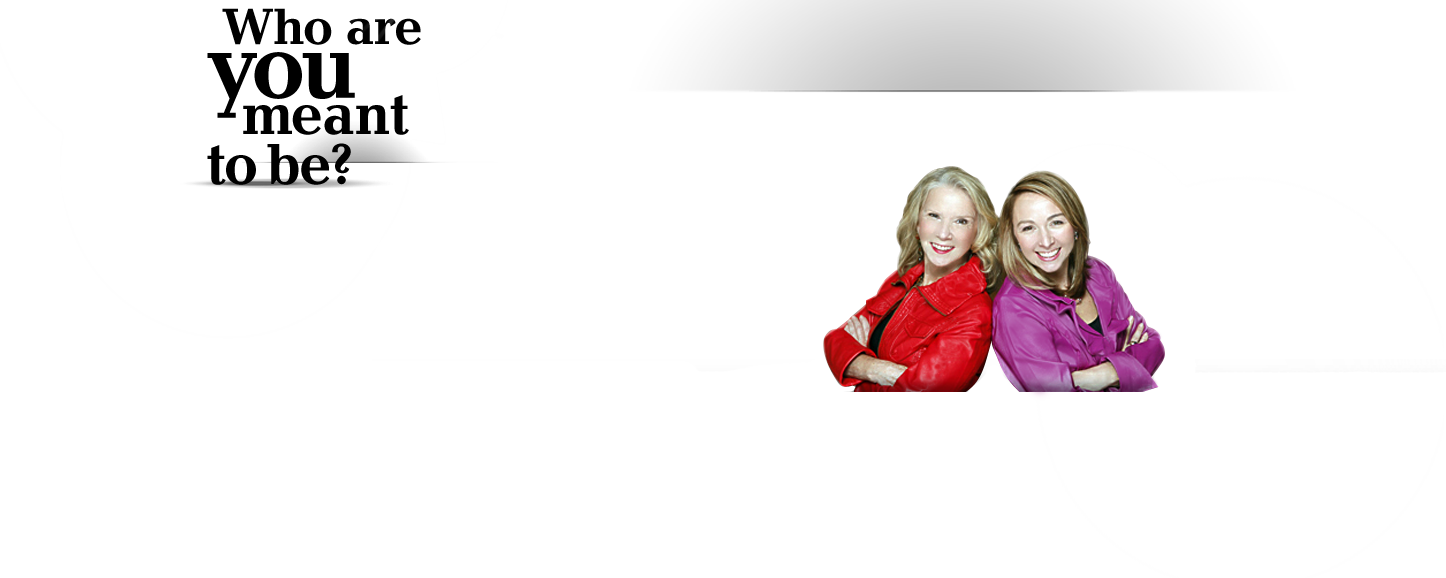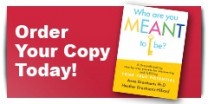We are dedicated to giving individuals, couples, families and businesses the wisdom and power to achieve their potential.
Q&A With Anne Dranitsaris Ph.D and Heather Dranitsaris-Hilliard
Q&A With Anne Dranitsaris Ph.D and Heather Dranitsaris-Hilliard
Authors of Who Are You Meant To Be? and founders of the Striving Styles Personality System
Why do you think the timing is right for this book?
Anne
Never before have we had more understanding of human behavior and how we develop. Even so, there has never been a time when people are more impulsive, self-destructive and intolerant of emotions. Young people are spending less time alone, with themselves, imagining, inventing or exploring. Parents either hover over their children anticipating their needs or keeping them so protected they are afraid of life. Conversely, when both parents work, children suffer through the loss of connection with parents, leaving them instead finding ways of filling the emptiness with reality television, video games and endless chatter with friends on the internet. They have little time to experience themselves or get to know themselves.
Heather
This is such a critical time for Who Are You Meant to Be as a result. Parents can learn how to focus children on meeting their own needs rather than micro managing them. Even when they aren’t at home, they can make sure that they are planning activities for their children to do to give them a sense of being in the drivers seat in their own lives. Adults can look at their self-defeating behaviors as symptoms of frustrated needs rather than character flaws. The developmental framework that we use in the Striving Styles Personality System gives them an approach to changing how they think about themselves and empowers them to achieve their potential.
There has never been a more critical time for changing the way that we relate to ourselves and our development as human beings. Everything that we need to do this – gaining self-awareness, understanding our needs, managing our emotions and developing our brain – is included in the Striving Styles Personality System.
What was it that prompted you to write this book?
Anne
As someone with a voracious need to understand why people behave the way they do, I began to realize that too many people were following their own theories, assessment processes and schools or thought around development. Instead of pulling it all together to help people in a global fashion, silos were being created, keeping people from the answers and help they need.
I also felt that our current approach to mental health focused too much on what was wrong rather than what was normal for people. Professionals laid claim to knowing more about our psychology and emotions than we did ourselves and they weren’t always forthcoming with information. It wasn’t available to everyone the way I believed it should be. Additionally, therapeutic schools put too much focus on what people felt and not enough on what they needed to do to put themselves in the drivers seat in their lives. Clients were getting stuck for years in therapy learning what they felt and not getting any further than that.
Despite all the information that is available to us today, we actually know very little about our own brains, how they are organized and the role they play in our emotions and our behaviour. I believe everyone should understand the mechanics of their own minds, to the same extent that we understand how the rest of our body works.
Heather
Despite all my years working with executives and leaders around behavioral change, when I tried to leverage this expertise during a difficult time in my own life, I came up short. I couldn’t find anything to explain why, despite my success as an entrepreneur, I was feeling so dissatisfied with my business life. Or, why despite my efforts, my marriage was failing. The personality assessments I relied on at work, were not helping me to get at the learning and behavioral difficulties my kids were experiencing. It was clear something was missing in explaining why and more importantly, what I could do about it.
Naturally, I turned to Anne’s expertise for help, and based on her research, we began developing an approach that would help our clients as well as us personally. Anne immediately focused in on the question of ‘what do I need’, which I couldn’t answer. I started asking my clients who were struggling at work the same question. It wasn’t clear. In fact, most of us would like to say we don’t need anything.
The more we worked on developing the Striving Styles, the stronger our belief that everyone should be aware of and understand their innate needs so that they can create fulfilling lives for themselves and achieve their potential. We knew we had to do something to put the power of the Striving Styles Personality System into everyone’s hands so they can become who they are meant to be.
Why is this different than existing self-help books?
Anne
We have created the Striving Styles Personality System to reflect the full range of human experience. Not just from an intellectual or behavioral perspective. We realized that we must talk about emotions whether it is popular, acceptable, or not. Experience and science have shown us that when we ignore how we and others feel, we cannot create or sustain behavioural change and development.
Rather than being prescriptive, Who Are You Meant to Be?, lets you first understand how your brain is organized and your innate needs that must be met. From that point, it shows you how to ensure the conditions are in place in your life – at home, work and in leisure – to get these needs met so you can thrive. It is not a cookie cutter approach, but one that takes into consideration how you are hard-wired.
Heather
Each of us wants to find our true calling. Yet we are often confused about our emotional reactions in times of stress, and while we know we should change our behaviour, we don’t know how. We are perplexed by what makes us and others tick. Too often we end up living in survival mode without realizing it, feeling frustrated and dissatisfied with our lives. As a result, we look outside of ourselves for answers that can only be answered from within.
This book gives people a user manual for themselves based on their Striving Style. It lets them understand who they are meant to be based on their own brain’s organization. It lets people move to self-acceptance, rather than trying to address perceived weaknesses or try to be who they think they should be based on the influence of others.
Most importantly, it shows them how to deliberately redirect powerful instinctive and emotional energies into constructive actions, as they meet the underlying psychological need of their Style. It makes it simple to self-actualize; so simple in fact that my pre-teen children and niece are able to understand their style and negotiate to get their needs met, instead of feeling like there is something wrong with them.
Anne
The fact is, there has never been a better time in history to understand yourself fully given all the advances in neuroscience, psychology, emotional and social intelligence. Existing systems fail to bring this insight to bear. This has left huge gaps in understanding dysfunctional behaviour and what causes it. We are excited to offer the SSPS to fill this gap and to show people how to become who they are meant to be.
What Changes Have You Seen in People?
Anne
From our perspective, this has been the most satisfying aspect of creating the Striving Styles. Both Heather and I have been working in behavioral change for decades and while we have been successful with our clients, both in private practice and in organizations, the approach laid out in Who Are You Meant to Be? has repeatedly fast tracked people’s development.
By knowing their Striving Style, people can now answer such typical questions like: why did I do that? What was I thinking going out with that guy? Why am I doing this again when I said I wouldn’t? Instead of blaming it on their upbringing or their mother, or responding with some other negative self talk about being needy or stupid, the Striving Styles helps people see things through another lens. When people learn that we do things because “we feel like it” or because we are trying to get our predominant need met, they are able to immediately make sense of their behavior.
Heather
There are lots of success stories as we watch people make shifts in their lives based on an understanding of their Striving Style. A long-term client of mine called me up the other day after reading about her Style. She was so excited. She finally understood why she has always had a sense of dissatisfaction with her life and a desire for something more. She understood why she has been struggling with her weight. As a Performer Style, her predominant need is to be recognized, however, she had kept her professional world small, keeping to the same organization for over 15 years out of fear and in doing so, was clearly frustrating her need to be recognized. She has been living in self-protective or survival mode. Accepting her need to be recognized, she is now going back to school, taking public speaking courses and exploring starting her own business, all actions aimed at creating the conditions in which her need will get met. At 45, she is amazed at how much energy she has and her weight is no longer an issue for her.
I love this example, as it shows how quickly people can relate to their style and translate it into what they can do in their lives starting today to get on the path to becoming who they are meant to be.
I was ignoring my need to be connected because my husband does not share it. Now, we have negotiated how we can both get our needs met. What a difference!"















